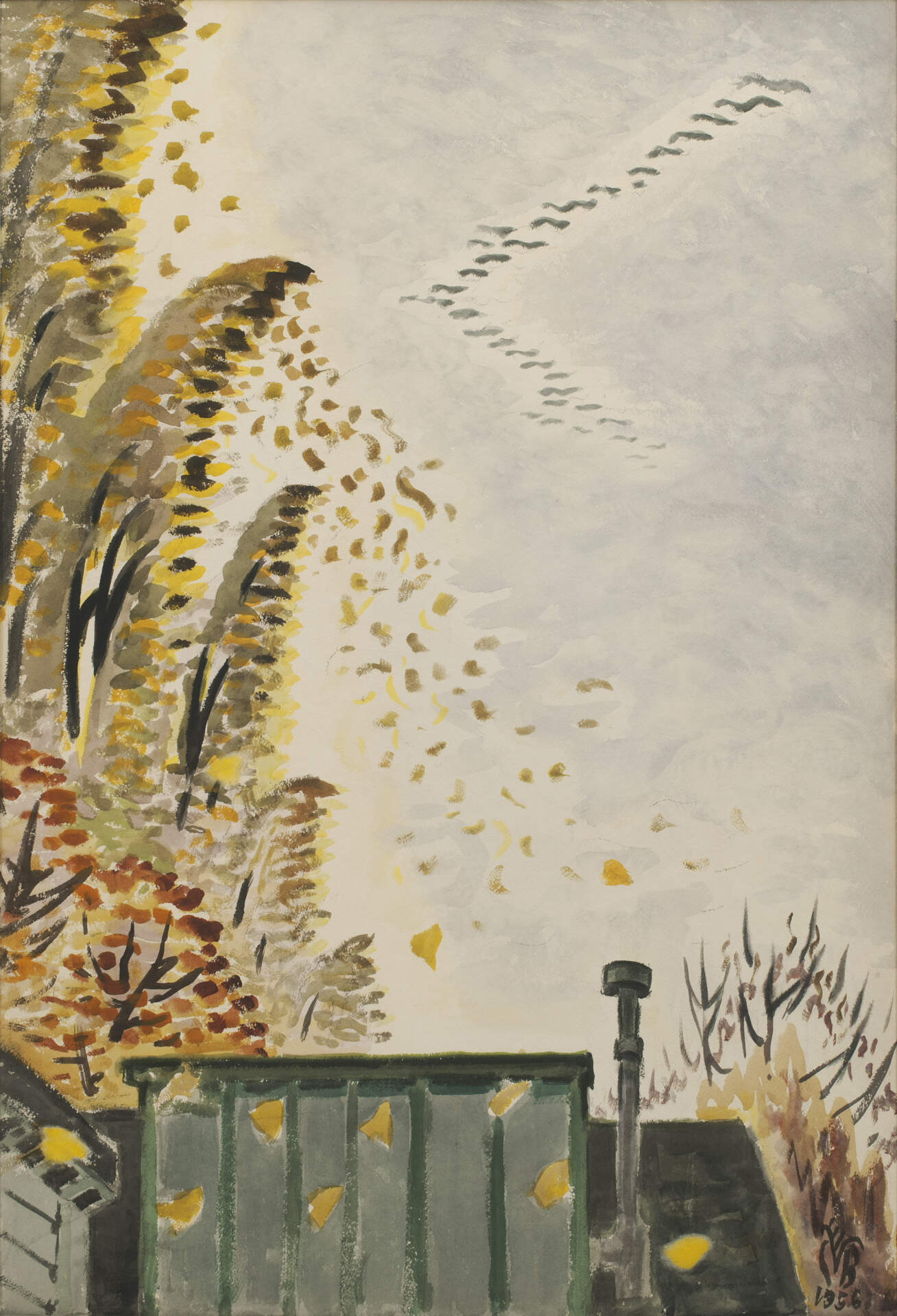Charles E. Burchfield (1893-1967)Wild Geese and Poplars
1956
watercolor on paper
39 x 26 1/2 inches
John Sacret Young Collection
Burchfield painted serendipitous observations that stirred his emotions and memories.
In March 1956, while studying the 1948 painting Poplars and February Sun, Burchfield decided he would like to create a new version of a wind-harp, recording that “the ancients invented a harp which they placed in porches, or an open window where the wind would catch it, and in passing through the strings, make soft weird “music” – (Aeolian Harp) / Nature of course “invented” the harp long before that — Any row of pines or poplars or similar trees sufficient to produce agonizing music that no human effort could match —”
The moment of inspiration came on October 18, 1956, when: “About mid-morning a flight of wild-geese going straight south – As they passed by the poplar trees an extra hard puff of wind scattered leaves over the sky – The sight and sound of wild geese affects me in a way that is hard to understand — My heart begins to pound, and breathing is difficult – It is an elemental event –”
As a youth, he read Thoreau’s account of the “telegraph harp,” an early 20th-century version of the ancient Aeolian harp. He borrowed the Thoreau’s idea for his paintings, Song of the Telegraph and Telegraph Music.
Wild Geese and Poplars resulted from his visceral reaction to the momentary sight of wind-tussled poplar leaves, honking migrating Canada geese, and nature’s haunting music generated by a stand of poplars that lined one side of his yard in Gardenville. The windy sky and trees are more prominent than geese in yet another version painted the following year: The Wind Harp, 1947-57.
